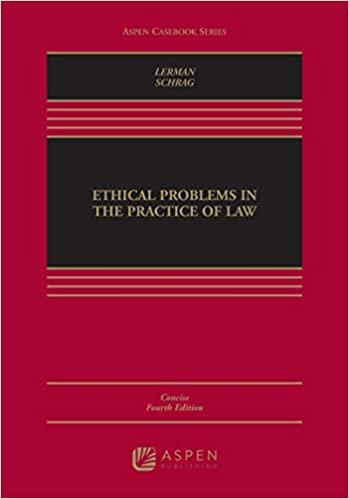Question
CLOSING CASE JCB in India In 1979, JCB, the large British manufacturer of construction equipment, entered into a joint venture with Escorts, an Indian engineering
CLOSING CASE
JCB in India
In 1979, JCB, the large British manufacturer of construction equipment, entered into a joint venture with Escorts, an Indian engineering conglomerate, to manufacture backhoe loaders for sale in India. Escorts held a majority 60 percent stake in the venture and JCB 40 percent. The joint venture was a first for JCB, which historically had exported as much as two-thirds of its production from Britain to a wide range of nations. However, high tariff barriers made direct exports to India very challenging.
JCB would probably have preferred to go it alone in India, but government regulations at the time required foreign investors to create joint ventures with local companies. JCB believed the Indian construction market was ripe for growth and could become very large. The company's managers believed it was better to get a foothold in the nation, thereby gaining an advantage over global competitors, rather than wait until the growth potential was realized.
Twenty years later, the joint venture was selling some 2,000 backhoes in India and had an 80 percent share of the Indian market for that product. After years of deregulation, the Indian economy was booming. However, JCB felt that the joint venture limited its ability to expand. For one thing, much of JCB's global success was based upon the utilization of leading-edge manufacturing technologies and relentless product innovation, but the company was very hesitant about transferring this know-how to a venture where it did not have a majority stake and therefore lacked control. The last thing JCB wanted was for these valuable technologies to leak out of the joint venture into Escorts, which was one of the largest manufacturers of tractors in India and might conceivably become a direct competitor in the future. Moreover, JCB was unwilling to make the investment in India required to take the joint venture to the next level unless it could capture more of the long-run returns.
In 1999, JCB took advantage of changes in government regulations to renegotiate the terms of the venture with Escorts, purchasing 20 percent of its partner's equity to give JCB majority control. In 2002, JCB took this to its logical end when it responded to further relaxation of government regulations on foreign investment to page 257purchase all of Escorts' remaining equity, transforming the joint venture into a wholly owned subsidiary. Around the same time, JCB also invested in wholly owned factories in the United States and Brazil.
Having gained full control, in early 2005 JCB increased its investment in India, announcing it would build a second factory that it would use to serve the fast-growing Indian market. At the same time, JCB also announced it would set up another wholly owned factory in China to serve that market. India and China, the two most populous nations in the world, were growing rapidly; construction was booming; and JCB, then the world's fifth-largest manufacturer of construction equipment, was eager to expand its presence to match its global rivals, particularly Caterpillar, Komatsu, and Volvo, which were also expanding aggressively in these markets.
By 2008, JCB's foreign investment was bearing fruit. The product line had been expanded from 120 machines in 2001 to over 250. JCB had 47 dealers and some 275 outlets around India, and it claimed a market share in India of 53 percent. Over the next few years, JCB continued to gain business in India. By 2016, it was the market leader for construction equipment in India with a 66 percent share and a network of 60 dealers and 600 outlets. Boosted by strong demand growth due to heavy infrastructure investment in India, in 2016 JCB opened two new factories in the country, increasing its local workforce to 5,000. By 2019, JCB was generating 4.1 billion in annual sales, almost half of which came from India. In addition to strong demand in India, JCB's Indian factories were also now exporting to 93 other countries. India had become the jewel in the crown for JCB.
Case Discussion Question
Why did JCB originally enter India via a joint venture with Escorts? What were the advantages of that joint venture? What were the limitations and risks?
In 1999, JCB took a majority stake in its Indian joint venture with Escorts. In 2002, it acquired all outstanding shares, establishing a wholly owned subsidiary. Why did JCB pursue this strategy? What were the benefits? Can you see any potential downside?
For years, India placed significant limits on inward FDI in order to encourage the growth of an indigenous industry. Why do you think it relaxed many of those regulations at the end of the 1990s and early 2000s? What were the benefits to the India economy? Was there a downside?
What does this case teach you about government policy toward FDI?
Please include references links used to answer the questions.
Step by Step Solution
There are 3 Steps involved in it
Step: 1

Get Instant Access to Expert-Tailored Solutions
See step-by-step solutions with expert insights and AI powered tools for academic success
Step: 2

Step: 3

Ace Your Homework with AI
Get the answers you need in no time with our AI-driven, step-by-step assistance
Get Started


